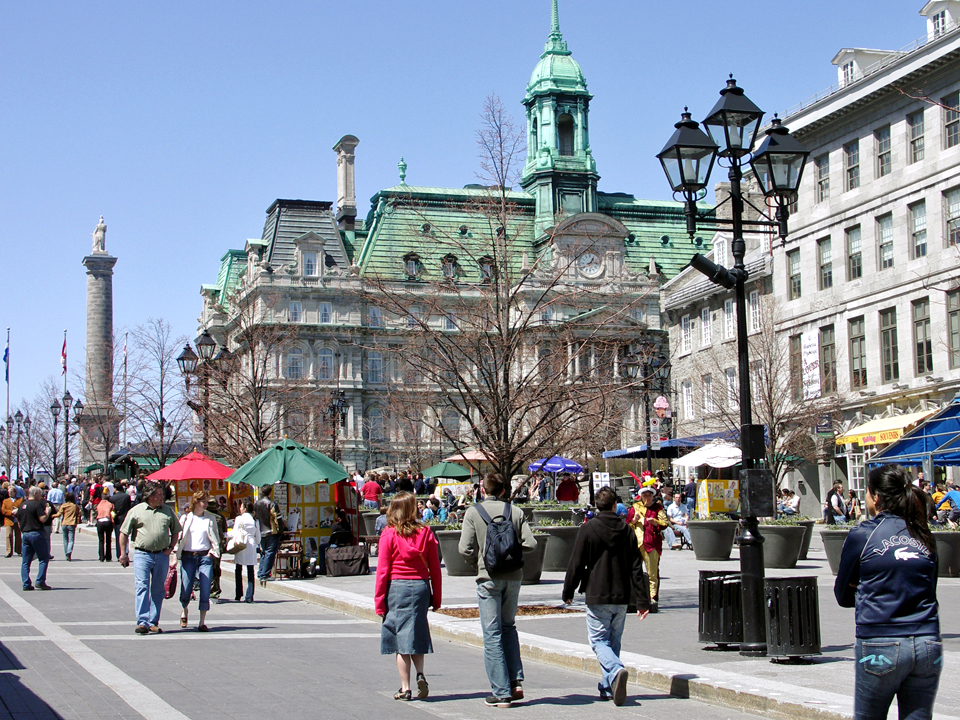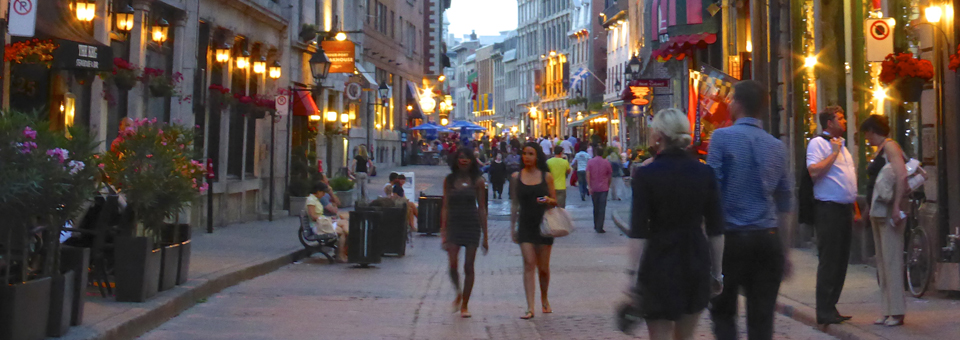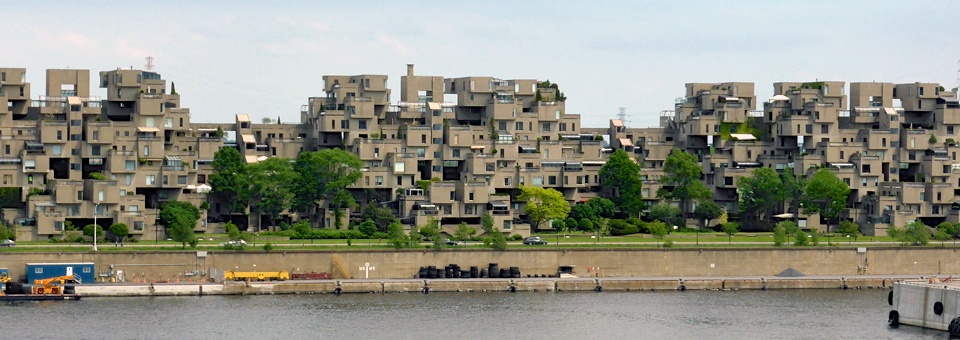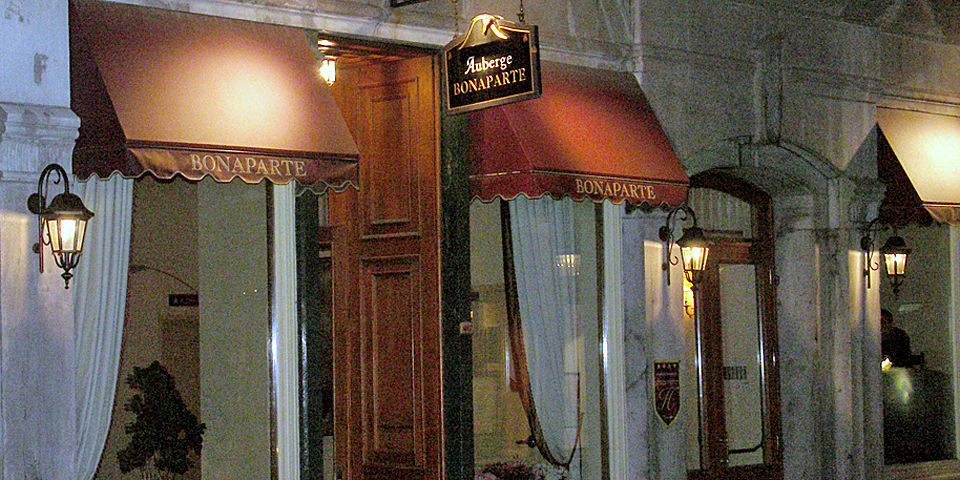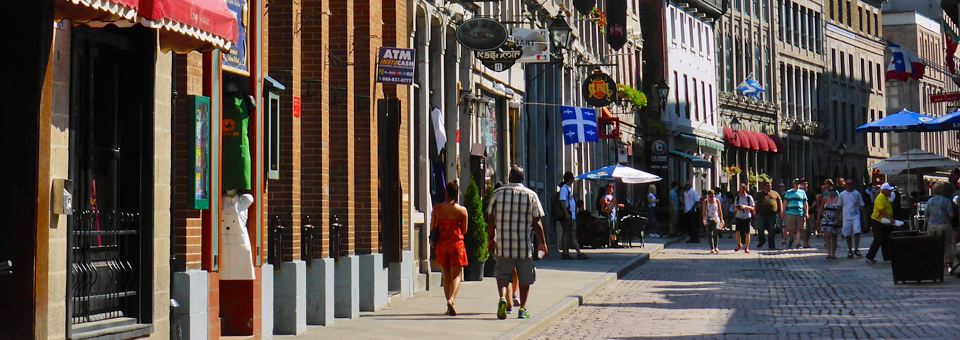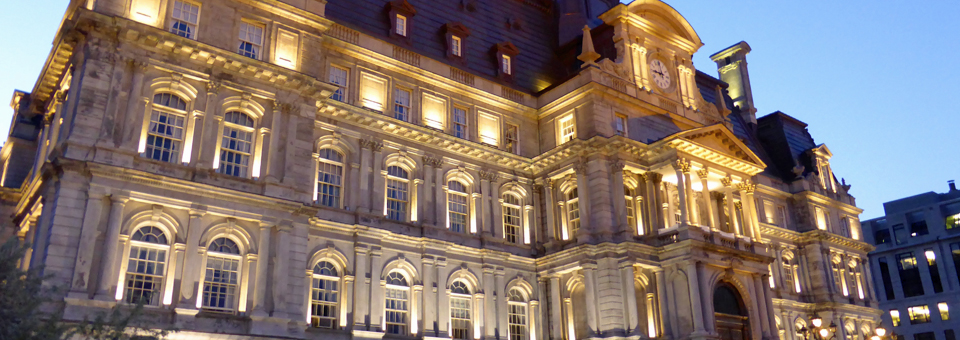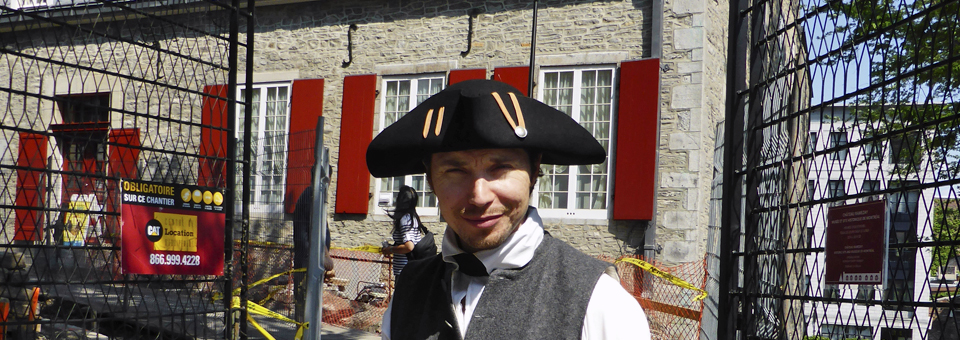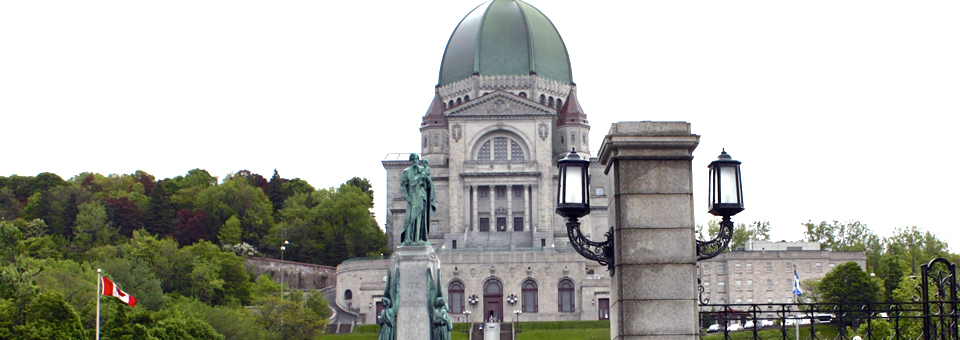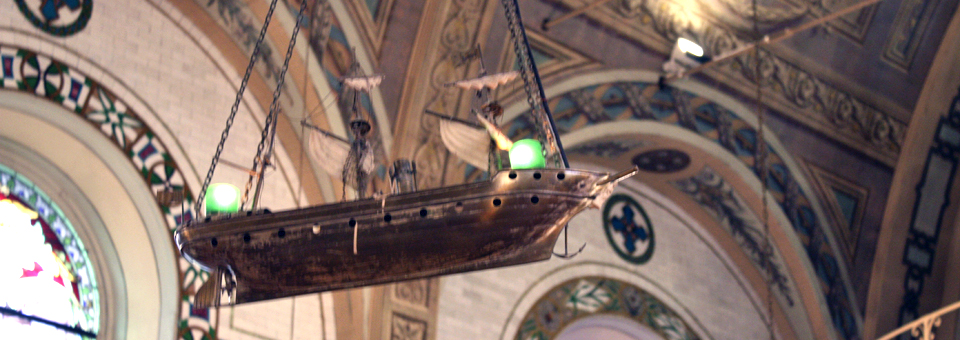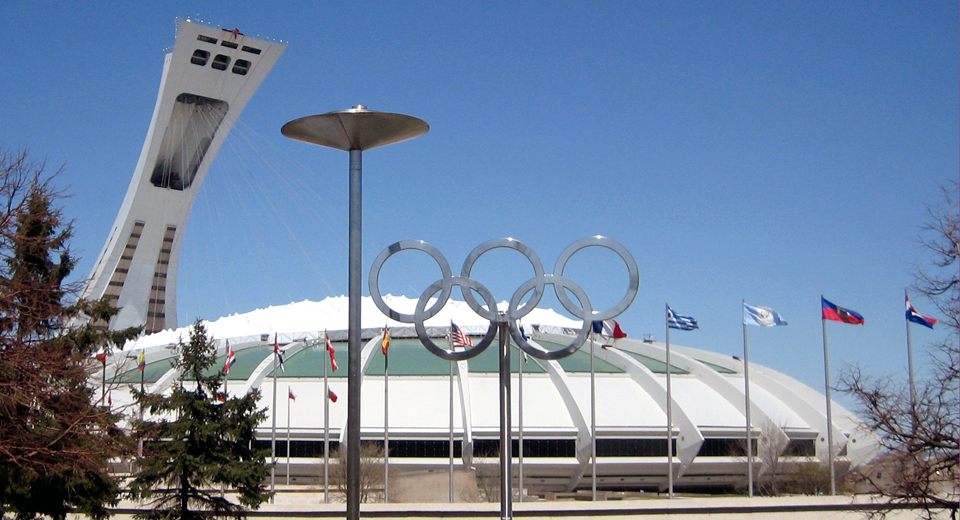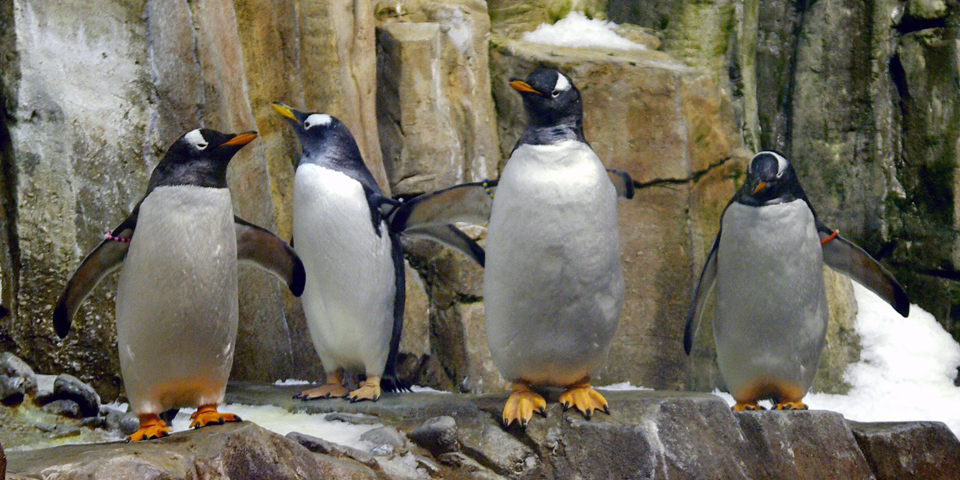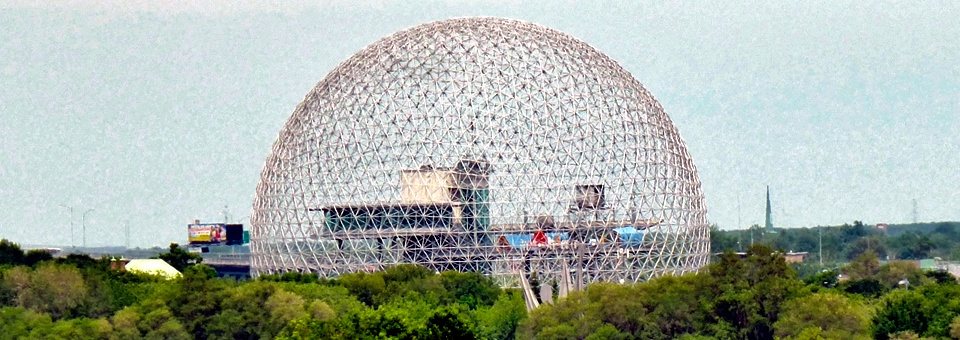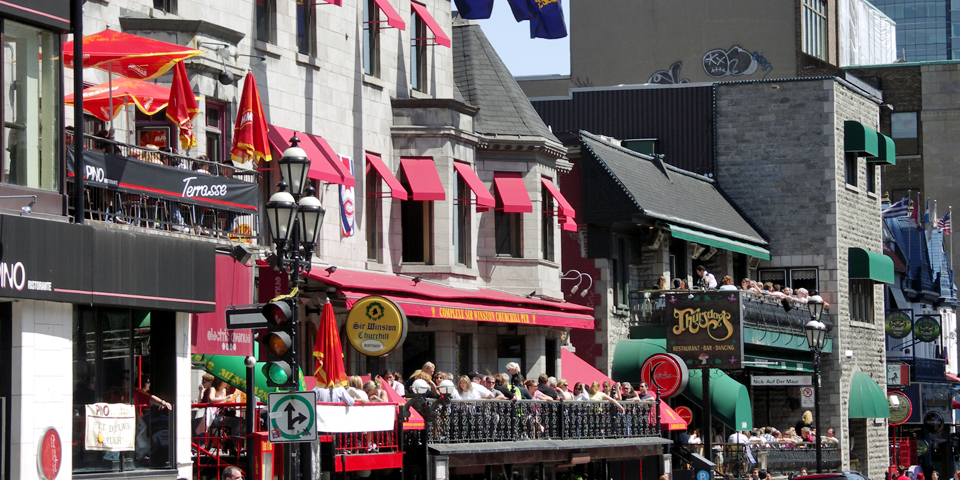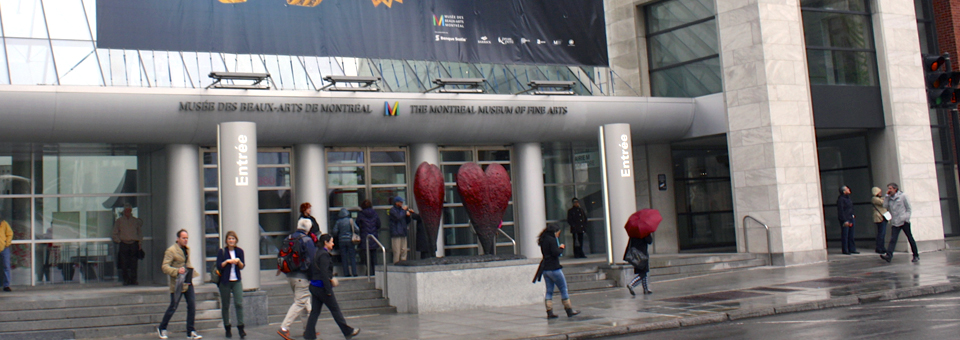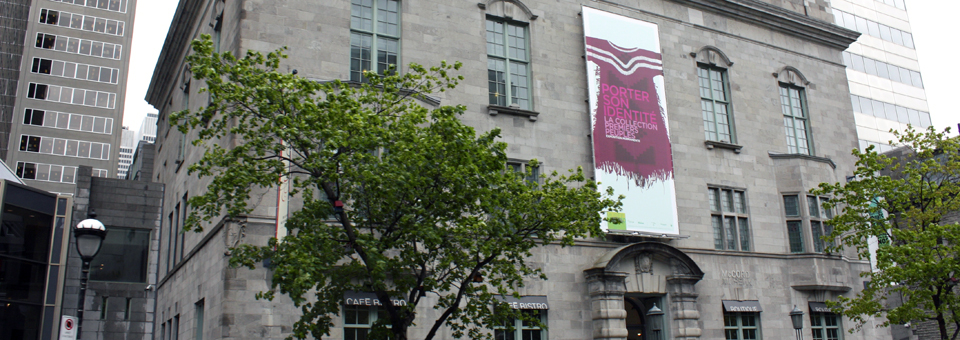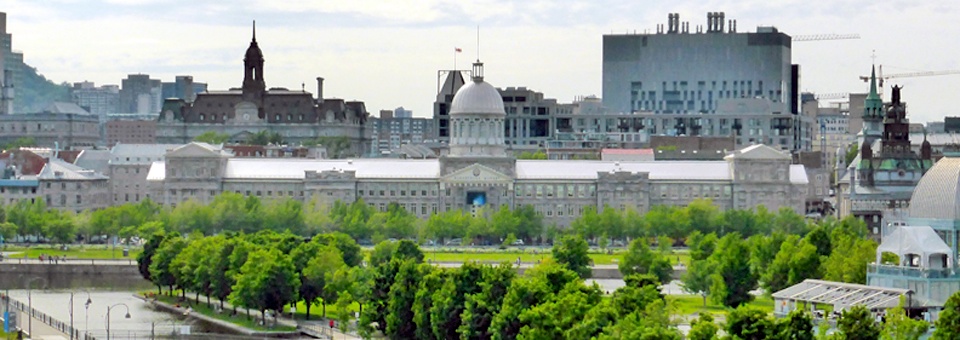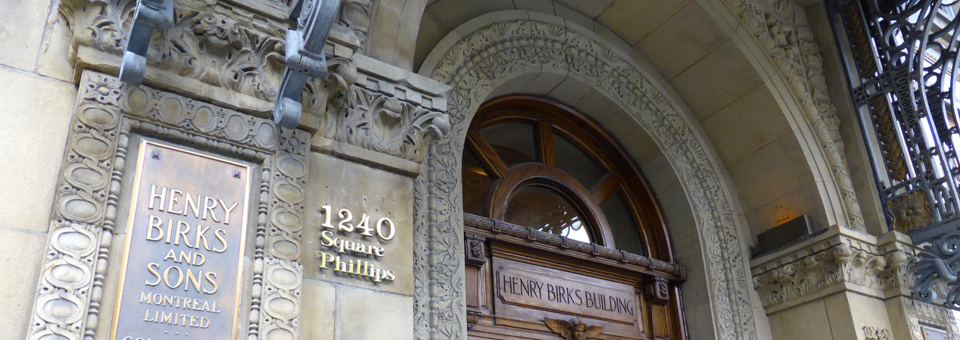Joie de vivre without crossing the pond: Montréal, Canada
A warm “Bonjour!” as we entered the auberge reminded us that we needn’t cross the pond to experience European ambience. A flower-bedecked horse-drawn calèche clip-clopped on the cobblestone street.
Our neighbors to the north exude a joie de vivre and Montréal, just 45 miles from the U.S. border, offers experiences rivaling those of the other great cities of the world. Whether for a vacation or simply a weekend get-away, cosmopolitan Montréal has it all— some of the best of the past and present, and diversity and diversions to suit all tastes and budgets.
History
Situated at foot of Mt. Royal, for which it is named, the island of Montreal is a port city, part of a system of canals connecting the Great Lakes and the Atlantic Ocean. Once the Indian settlement Hochelaga, it gained the attention of Jacques Cartier (1535) and Samuel de Champlain (1603) for fur trade. Founded in 1642 as Ville Marie de Montréal by French missionaries hoping to spread Catholicism, it became an important fur trading center and base for continued western explorations. It was surrendered to the British during the French and Indian War and occupied briefly by Americans during the American Revolution.
The city grew in the 1800s with immigration from England, Scotland, and Ireland. The Lachine Canal, Canadian Pacific Railway headquarters and Industrials Revolution brought increased prosperity to Montréal, which by then the economic center and capital of Canada. Mansions were built in what became the prestigious Outremont and Westmount neighborhoods.
The Great Depression and World War II period left Old Montréal in decline. It remained in that state until it was protected as an historic district in the 1960s. Public support and entrepreneurship has restored the elegant 18th and 19th structures to their former glory and this is once again a hub of city life.
As the site of the international Expo ‘67 and 1976 Summer Olympics, Montréal quickly developed into a dynamic city attracting millions of visitors annually.
Language
The official language of Montréal’s province Québec is French, and Montréal is the second-largest French-speaking city in the world. Most people are bilingual, and English is spoken widely. Use a little French. Bonjour, bonsoir, and merci will be well-received and will give you the sense of being worlds away.
Getting around
Streets run parallel to the river and numbers are given as east or west of Saint-Laurent Boulevard, “The Main”, traditionally separating the English and French districts.
Walking is a great way to experience the city, buses and cabs are plentiful, and the Metro is clean and convenient. Three and seven day transportation passes are a good value. The Montréal Museum Pass may be purchased at tourist information centers and some hotels. It includes 3 consecutive day admission to 32 museums and other attractions and can be combined with a transportation pass.
Accommodations
We stayed at the Auberge Bonaparte, a charming a four-star European-style gem with Old World ambience and modern refinements situated in the heart of Old Montréal. The 30 rooms and grand suite are above Bonaparte, a top-notch classic French restaurant with an extensive bill of fare including a delectable six-course tasting menu and budget-pleasing Table d’Hôte (specials). Rooms, furnished in the Louis-Philippe style, have French dormer windows, and the rooftop terrace overlooks the city.
A scrumptious breakfast of fresh fruit, crepes with maple syrup, or omelets (try the spinach and brie) and croissants, juice, and coffee is included. For that special getaway, splurge for the suite with a balcony overlooking the gardens of Notre Dame Basilica.
Auberge Bonaparte’s more casual sister property, Auberge Les Passants du Sans Soucy, is accessed through one of the area’s many art galleries. It is located around the corner on historic Rue St. Paul, a treasure trove of architecture, shopping, museums, and international dining choices.
The nearby Centaur Theater features English-language plays. Notre Dame Basilica offers concerts and is just a few steps away.
Stepping back in time
Meander the streets of Old Montréal. Charming by day, by night gaslights glow and architectural treasures are highlighted by an illumination system.
Pointe à Callière, Montréal’s Museum of Archaeology and History, is built on the excavated area where the first settlers traded with natives. A multimedia show projected atop the ruins precedes a guided tour.
Benedict Arnold and Benjamin Franklin visited Chateau Ramazay, originally the residence of the 11th governor. It’s now an historical showcase with stunning carved mahogany, gardens, and displays of early everyday life.
Montréal’s only remaining fort is across the river on Île St. Helene. In summer, the Stewart Museum’s collection is enlivened with costumed interpreters and re-enactments of 18th century military drills with French soldiers and Scottish bagpipers.
Musée des maitres et artisans du Quebec presents handcrafted work since the city’s 17th century founding. At Economuseums throughout the city, artisans may be seen at work.
Churches
“This is the first time I was ever in a city where you couldn’t throw a brick without breaking a church window. Yet I was told you are going to build one more…”
Mark Twain, during his first visit to Montréal, 1881
A visit to Montréal would not be complete without a stop at the magnificent Gothic Revival Basilica of Notre Dame. Tours are in French or English, and at night a sound and light show, “And then, there was Light”, highlights the features and heritage of this masterpiece.
St. Joseph’s Oratory, on Mount Royal, was the dream of Brother André, a humble doorkeeper whose devotion to St. Joseph led to his being regarded as a miracle worker. The dome of this pilgrimage site is second in height only to St. Peter’s in Rome. Inside are Louis Parent’s religious woodcarvings.
Climb the steeple of Notre Dame de Bon Secours, or Sailors’ Church, the city’s oldest stone chapel, to the highest publicly accessible view of Old Montréal. The adjacent Marguerite Bourgeoys Museum depicts Montréal’s first teacher and Amerindian life.
Olympic Park
The tallest inclined tower in the world leans at 45º and dominates the skyline. Built for the 1976 Summer Olympics, the funicular ascends to unequalled views.
More than a zoo or aquarium, experience four recreated climates and ecosystems of the Americas at Biodome.
Enjoy sights and scents in a global tour of horticultural treasures in ten greenhouses and 30 outdoor theme gardens at the Botanical Gardens. The Japanese and Chinese gardens are soothing oases and popular picnic spots. Adjacent is Insectarium—the largest collection in North America.
The Islands
Drive on the Canadian Grand Prix race circuit, test gravity on a La Ronde amusement park, or picnic at the beach. Jean Drapeau Park encompasses the two islands, Île de Helene, and Île Notre-Dame.
Expo 67’s American pavilion by Buckminster Fuller has been transformed into Biosphere. It is an entertaining center of environmental education, with colourful interactive exhibits and multimedia presentations.
Try your luck at the government-operated Casino, open 24/7, in the former French and Quebec pavilions. A variety of dining options are offered.
More cuisine
Join locals and save money to splurge on a night on the town. Public Markets, like Atwater or Jean-Talon in Little Italy offer fresh produce, breads, cheeses, and Quebec wine or ice cider for a picnic. Montréal cuisine is a cultural cornucopia as diverse as its population.
Try croissants and café au lait at a boulangerie. Fairmount and St-Viateur, named for their street locations, are the best known bakeries for Montréal bagels. Landmark Schwartz on St. Laurent is a favorite for Montréal’s smoked meats.
Unique and trendy, the bustling bistro Au Pied de Cochon (The Pig’s Foot) features Quebecois specialties. Nearly every dish includes fois gras—including poutine, the already decadent French fries with gravy and cheese curds, and signature duck in a can. For dessert try Pouding Chômeur, a poor man’s cake topped with a maple syrup sauce.
Restaurant districts include St. Laurent north of Sherbrook, Duluth Street and the Plateau area (many are BYOB), and, day or night, terraces along Crescent, Saint-Denis and Saint-Laurent Boulevards.
Museum Quarter and the Golden Square Mile
To the east is the Golden Square Mile, with mansions, many donated to McGill University, five-star hotels, designer fashions, art galleries, and fine restaurants.
Montréal Museum of Fine Arts, one of the best in North America, contains impressive collections of art through the ages and temporary exhibits.
The McCord Museum exhibits important collections of costumes, textiles, photographs reflecting the history and culture of Canada.
To the west, in an award-winning building, the Canadian Center for Architecture includes a 19th century Montréal House.
Downtown, the Contemporary Art Museum is linked to underground pedestrian network.
Shopping
In Old Montréal, Bonsecours Market features high-quality regional fashions and crafts.
Ste.-Catherine Street has the highest concentration of stores in Canada, and connects to the Underground City, a 20 mile network of pedestrian walkways, Metro stations, department stores, boutiques, businesses, hospitals, churches, and universities.
Find a wide selection at La Baie, specialty items in ethnic neighbourhoods, or a bagpiper at Ogilvies. Antiques are along Rue Notre Dame between Guy and Atwater or Amherst by St. Catherine.
Luxury shopping? Jewelry from Birks includes that signature blue box and ribbon. True to its history, Montréal remains a fur capital of the world.
More entertainment
Cheer your team at the Bell Center, chuckle at Just for Laughs Comedy Club, or catch the Cirque du Soleil, founded here.
There’s the Grand Ballet, the Symphony at Notre Dame, or L’ Opéra de Montréal. The island of Montréal is ringed with bicycle and walking paths, parks, and benches.. Dine, dance, or simply cruise along on the St. Lawrence.
Let the fun begin
With over 80 a year, Montréal is known as the City of Festivals, with something for everyone. In summer Flora Montréal, International Fireworks Competition, International Jazz Festival, Just for Laughs Festival, International Film Festival, and Grand Prix Canada are but a few.
Montréal is a happening city, a place to relax, with as much to offer as you choose to enjoy. Summer temperatures average 65-70º. There’s no better time to visit.

